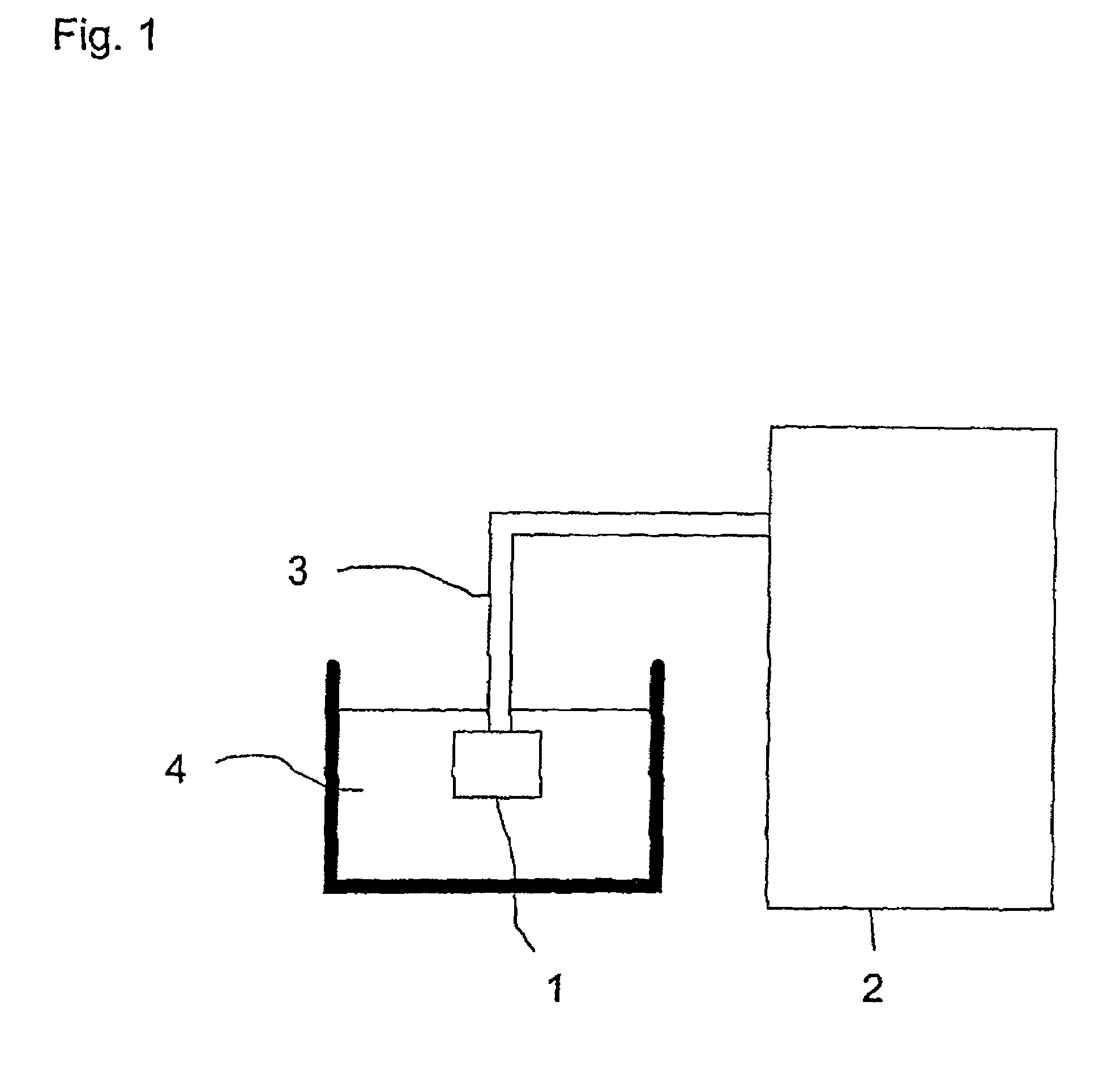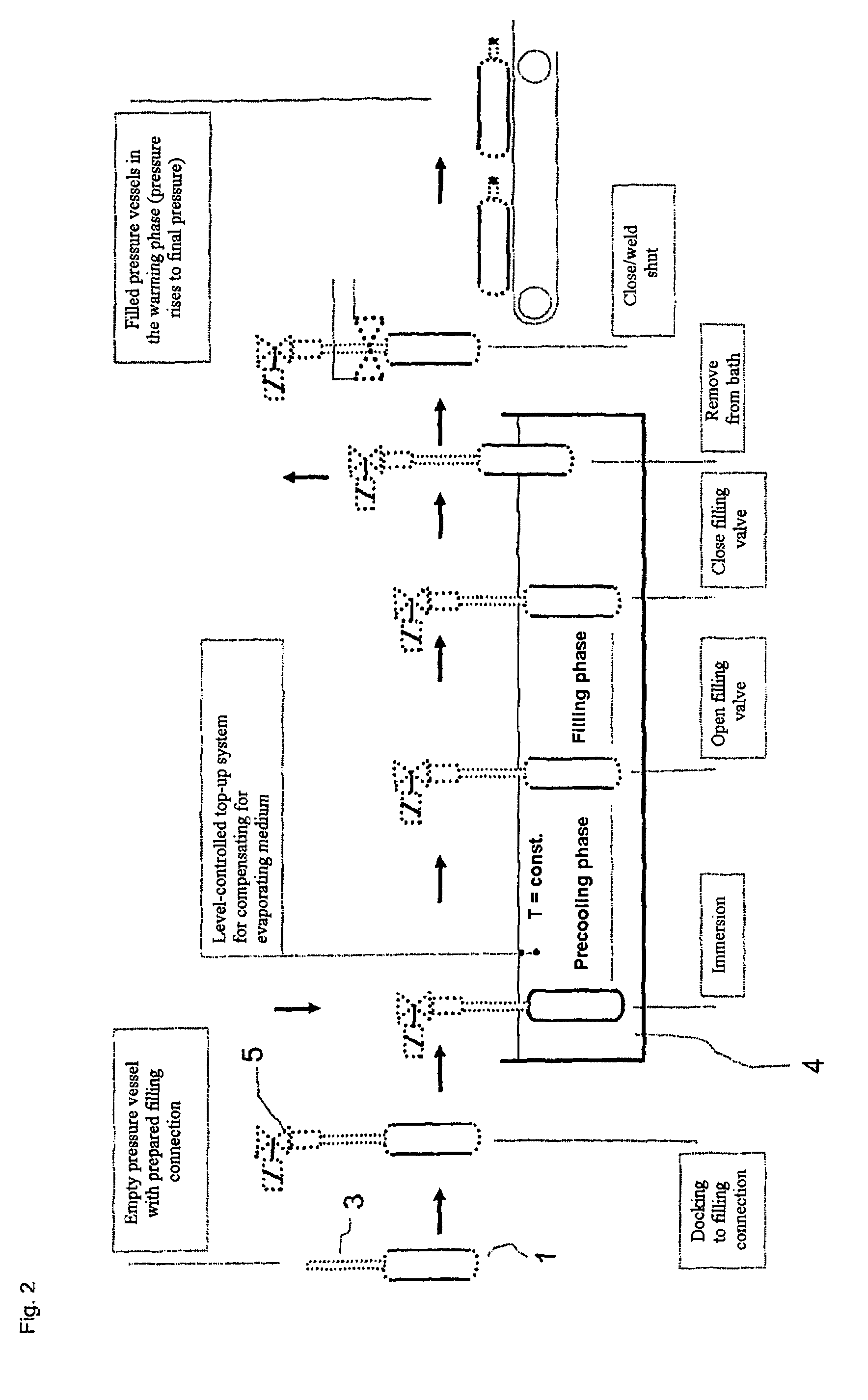Method for filling a pressure vessel with gas
- Summary
- Abstract
- Description
- Claims
- Application Information
AI Technical Summary
Benefits of technology
Problems solved by technology
Method used
Image
Examples
Embodiment Construction
[0055]The filling device shown in FIG. 1 has a pressure vessel 1 which is to be filled, a compressed-gas source 2, e.g. a compressed-gas cylinder (filling pressure for example 300 bar) containing helium or hydrogen with shut-off valve and pressure reducer, a gas connecting conduit 3 and a refrigeration bath 4 containing a cryogenically liquefied gas, such as liquid nitrogen, as refrigerant. The pressure vessel 1 is, for example, part of a gas generator of an airbag system or a gas canister.
[0056]After the pressure vessel 1 has been immersed in the refrigeration bath 4, the gas which is to be introduced is passed from the compressed-gas source 2 into the pressure vessel 1 by setting a desired pressure (e.g. 90 bar absolute; set at the pressure reducer of the compressed-gas cylinder). The gas, for example helium or hydrogen, quickly adopts the temperature of the surface and therefore the boiling temperature of the refrigerant. In the pressure vessel 1, the gas is cooled to the tempera...
PUM
| Property | Measurement | Unit |
|---|---|---|
| Temperature | aaaaa | aaaaa |
| Temperature | aaaaa | aaaaa |
| Pressure | aaaaa | aaaaa |
Abstract
Description
Claims
Application Information
 Login to View More
Login to View More - R&D
- Intellectual Property
- Life Sciences
- Materials
- Tech Scout
- Unparalleled Data Quality
- Higher Quality Content
- 60% Fewer Hallucinations
Browse by: Latest US Patents, China's latest patents, Technical Efficacy Thesaurus, Application Domain, Technology Topic, Popular Technical Reports.
© 2025 PatSnap. All rights reserved.Legal|Privacy policy|Modern Slavery Act Transparency Statement|Sitemap|About US| Contact US: help@patsnap.com



